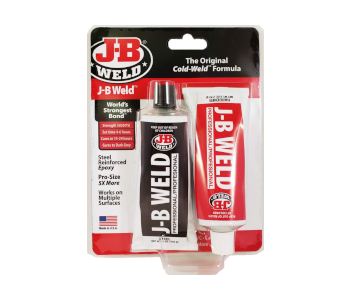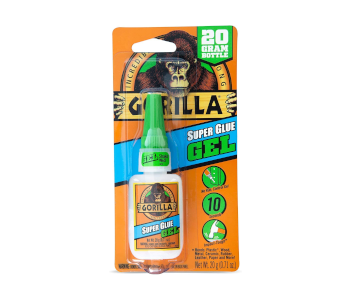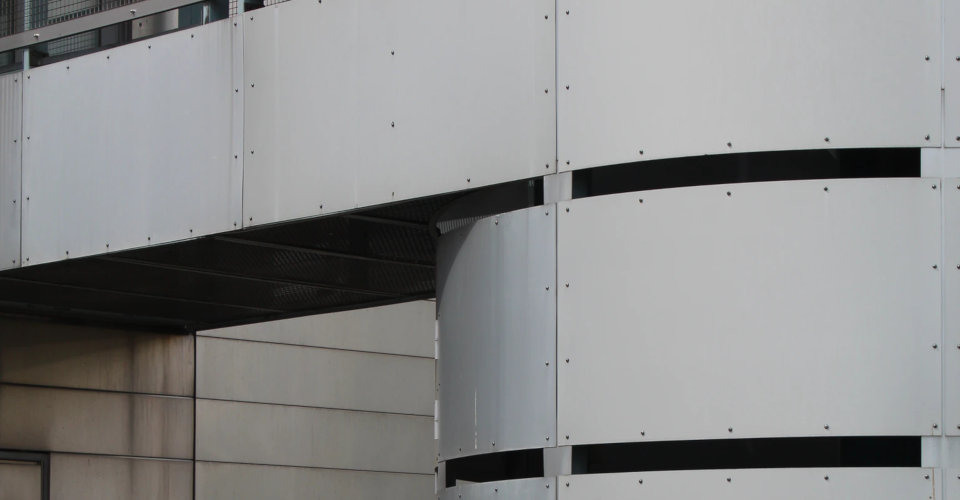Tips on Bonding Aluminum and the Best Aluminum Adhesives
Considering how common a material aluminum is, it’s very likely that you will need to make repairs on an aluminum part or build a project out of it eventually. When such a situation comes up, you will need to have a good aluminum adhesive and the know-how to use it properly.
Just as with other metals, bonding aluminum requires considerable preparation and the use of a proper adhesive. Check out our guide on how to bond aluminum parts and our recommendations of the best adhesive products for aluminum.
What makes aluminum special?
Compared to other metals, aluminum is one of the most popular and commonly used. Technically, aluminum is only a chemical element. What most people are familiar with is aluminum alloy, a compound predominantly made from aluminum but mixed with other metals such as magnesium, zinc, silicon, or copper among several others.
Just to give you a reference for how widely used aluminum is, the global production numbers of aluminum alloy is second only to iron.
What is it about aluminum? Compared to other metals, aluminum is quite cheap. This makes it an ideal material for commercial applications, such as in the standard soda can or aluminum foil. A decidedly non-toxic metal, aluminum has been used for food storage and preparation for decades.
If you look around your house, you’re likely to spot several appliances made with aluminum parts. Aside from being inexpensive, aluminum exhibits good corrosion resistance. It’s far from being the strongest metal alloy but is exceptionally lightweight. This has made aluminum alloys one of the more preferred materials for automotive parts and bicycle frames.
Given how we own so many kitchen utensils, electrical appliances, and cars that have aluminum parts in them, knowing how to work with aluminum is but a prudent measure.
How to bond aluminum using an adhesive
Just as with any metal, you will need to do surface preparation when applying adhesive to aluminum. However, you cannot just sand the surface of aluminum right away. In most cases, an aluminum surface will already have an overlying layer of aluminum oxide.
If the aluminum oxide layer is not removed before adhesive application, the adhesive ends up sticking to the oxide instead of the aluminum itself. This is the most common reason for the failure of aluminum adhesives – the oxide layer ends up getting removed from the aluminum surface.
The first order of business is to wipe off this layer of aluminum oxide with an appropriate solvent. This step also removes any oil, dirt, or grease which may still be on the aluminum surface. Any acetone-based or isopropanol-based solvent will do. Make sure that all traces of the solvent have evaporated away before moving on to the next step. After wiping the surface with a solvent, you’ll have to act fairly quickly. Aluminum readily reacts with the atmosphere to form aluminum oxide, giving you only a small window to do the next few steps.
Take a piece of low-grit sandpaper and apply it to the mating surface of the aluminum. You don’t need to do a lot of sanding – just enough to remove any polish from the surface. This will increase the ability of the adhesive to penetrate the metal surface, making it much more effective. The abrasive effect of sandpaper should also help remove any residual aluminum oxide particles. Make sure to wipe down the abraded spot again with some solvent to remove any dust from the sanding process.
From there, it’s a matter of following the instructions of the adhesive you’re working with. Some adhesives may require that they are applied to both mating surfaces. Other adhesives should only be pressed together after a specific flash-off time has passed. Different adhesives behave differently, so it’s important to follow specific instructions to ensure that they work as intended. Make sure to follow the prescribed curing time before using the aluminum part in its normal circumstances.
No matter which adhesive you choose, make sure to wear gloves and eye protection. Read the safety guidelines for your adhesive to know what to do should it come in contact with skin. If any of the adhesive gets in your eyes, seek medical attention immediately. Make sure to work in a place with good ventilation – otherwise, you may also need to wear respiratory protection.
Best adhesives for aluminum
1. JB Weld Steel Reinforced Epoxy

If you want some durability in your aluminum welds, then this two-part epoxy adhesive from JB Weld is considered one of the best options. With a tensile strength of up to 5020 psi and stability up to 550 F, this is one of the suitable adhesives for heavy-duty applications. When fully cured, the epoxy weld is completely waterproof and will not be broken down by acids, oils, and other chemicals.
As with any two-part epoxy, using the JB Weld requires a bit more preparation than usual. Once you have combined the two components equally, spread a very thin layer of the mixture on both parts of the mating surface. Ideally, the two parts should be clamped together because the optimal curing time for this adhesive is 24 hours.
A two-part epoxy provides a tough and rigid weld, ideal repairs in automobiles, household appliances, and pipelines. It can be quite brittle, so you will not want to use it for parts that need to retain flexibility. The long curing time also discourages the use of a two-part epoxy for emergency fixes.
2. Gorilla Super Glue Gel

Speed may not be the strong suit of a two-part epoxy adhesive, but that is where a cyanoacrylate super glue shines. This super glue from the ever-reliable Gorilla brand works well with most metals, including aluminum. When fully dried, the adhesive remains stable at temperatures of up to 220 F.
The biggest upside of going with superglue for binding aluminum is the fact that it dries in less than a minute. It’s nowhere near as strong as epoxy but retains a good amount of flexibility This is ideal for repairing aluminum parts that move around a lot. This particular super glue has a gel-like consistency for more controlled application.
Although a super glue bond exhibits good impact resistance, it is nowhere near as resilient as a weld made by a two-part epoxy. As mentioned, the heat stability of super glue is only up to 220 F. The interior of a car on a hot day can easily go above that temperature. This makes super glue inappropriate for kitchen utensils, many electrical appliances, and automobile parts. Super glue is very convenient but also has a very narrow range of suitable applications.
3. Hy-Poxy Alumbond Aluminum Putty Repair Kit

If you’re repairing heavily damaged aluminum parts, then you’re going to need an adhesive that has a bit more bulk or body. That is exactly what this aluminum putty-based adhesive from Hy-Poxy was designed for.
In terms of complexity, this putty is likely the adhesive that requires the highest level of skill to use properly. Upon mixing of the two components, the adhesive starts off quite runny with a very liquid-like consistency.
As time passes, it becomes more of a putty until it hardens beyond being workable at around 45 minutes. This gives you a rather large window to work the putty but only if you know what kind of texture you’re going for.
The advantage of using a putty is that you can use it to fill in gaps, cracks, or pinhole leaks in your aluminum part. You will likely have to work the putty with your hands, so make sure to wear gloves. It can be quite a messy operation.
The Alumbond is a sufficiently heavy-duty adhesive, so feel free to use it in your car or in an industrial setting. The resulting weld can also be sanded and polished smooth, which may be necessary considering how difficult it is to apply.
4. Loctite Premium Polyurethane Construction Adhesive

A polyurethane glue bridges the gap between super glue and a two-part epoxy adhesive. It dries faster than epoxy, is easier to work with, and has more heavy-duty resilience than plain old super glue.
Unlike superglue, this polyurethane glue takes about 30 minutes to dry. However, it will still take 24 hours for the adhesive to achieve full strength. Once it has dried, the polyurethane adhesive achieves better tensile and shear strength than standard superglue. Its heat stability is no better off with a service temperature of only up to 160 F.
The wetting properties of this polyurethane glue are excellent, making it ideal for working with small pieces. The glue dries with a tan color, though, so you may want to clean off any excess adhesive before it fully cures. If you need a strong adhesive for your aluminum parts but don’t want to deal with a two-part epoxy, then the Loctite polyurethane glue is exactly the adhesive you’re looking for.
Final thoughts
Just as with most metals, bonding aluminum parts is less about the adhesive you use and more about how well you prepare the surface. The concept of having to remove an aluminum oxide layer is quite unique here and one that you will do well to remember if you need to repair your appliances.
However, once you’ve cleaned off an aluminum surface and roughened it up a bit, you can use any of a range of adhesives designed to work with metals. There are, of course, a few subtle differences (as we have detailed) between these adhesives, but any of the ones we have listed here should work spectacularly.

